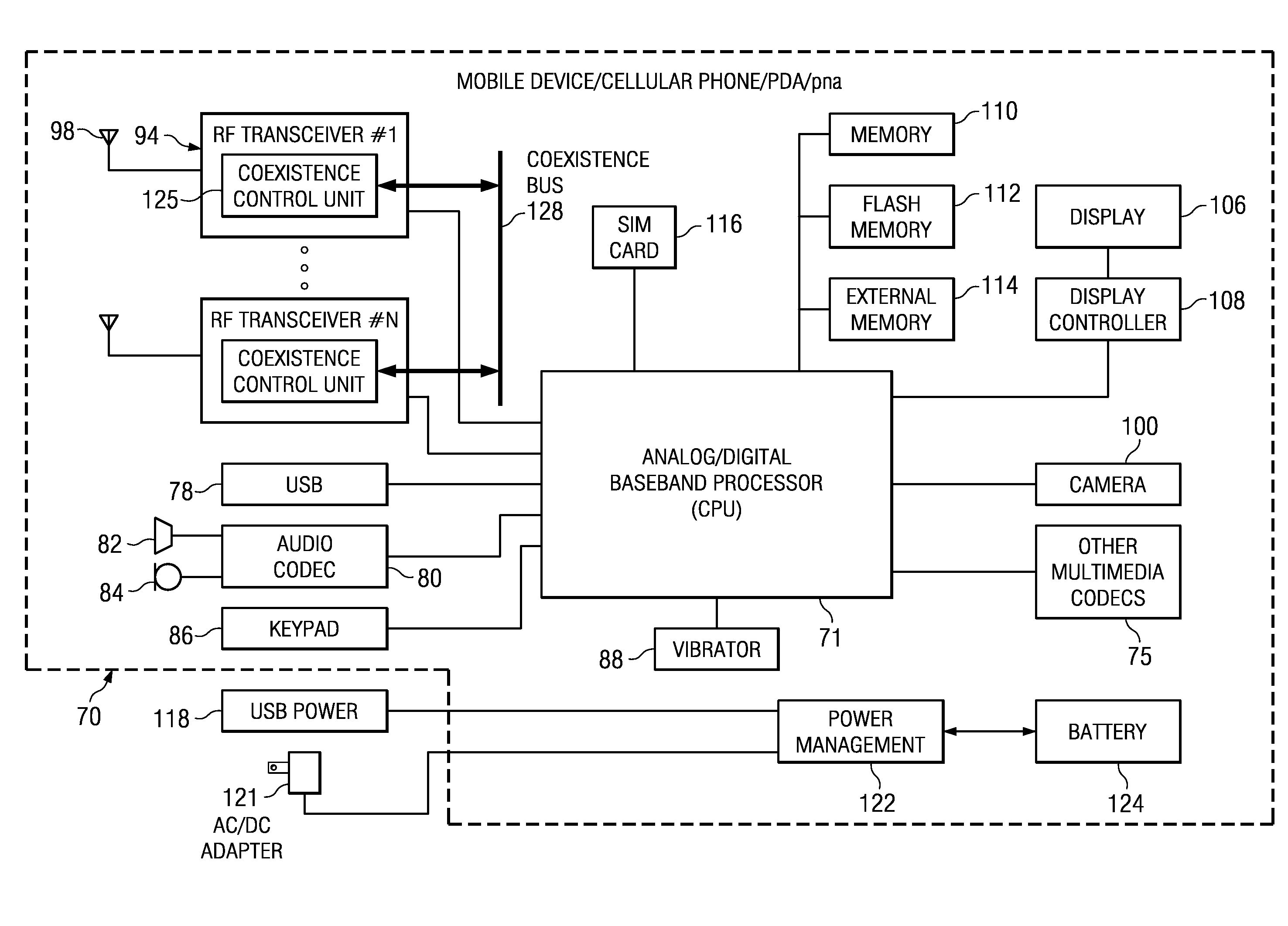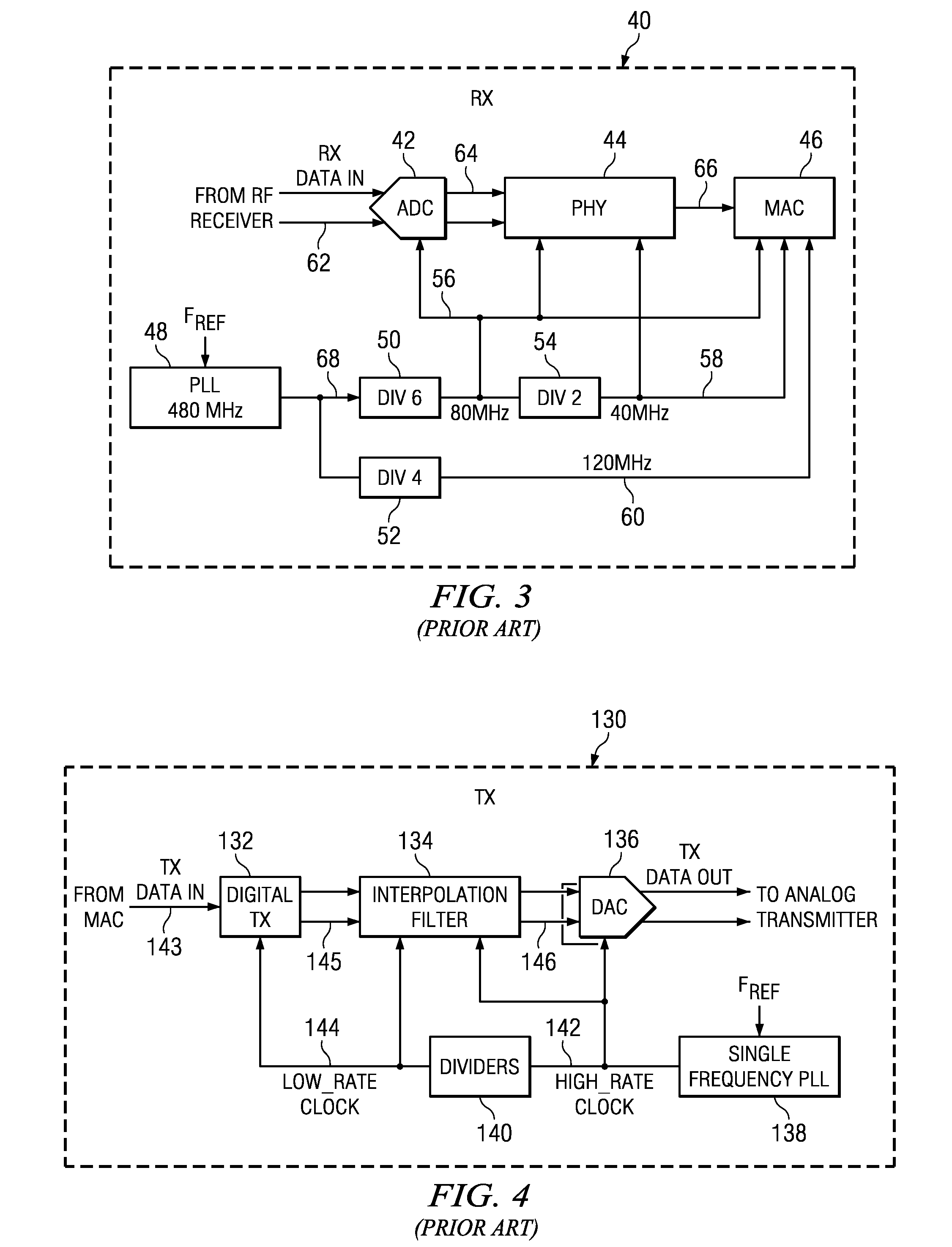Distributed coexistence system for interference mitigation in a single chip radio or multi-radio communication device
a coexistence system and radio technology, applied in the field of data communication, can solve the problems of affecting the operation of the radio itself, the complexity of the implementation of the traditional rf circuit, and the inability to manufacture the mask adder of the rf/analog circuit,
- Summary
- Abstract
- Description
- Claims
- Application Information
AI Technical Summary
Benefits of technology
Problems solved by technology
Method used
Image
Examples
Embodiment Construction
Notation Used Throughout
[0063]The following notation is used throughout this document.
TERM DEFINITION
[0064]AC Alternating Current[0065]ADC Analog to Digital Converter[0066]ASIC Application Specific Integrated Circuit[0067]AVI Audio Video Interface[0068]BMP Windows Bitmap[0069]BW Bandwidth[0070]CMOS Complementary Metal Oxide Semiconductor[0071]CPU Central Processing Unit[0072]DAC Digital to Analog Converter[0073]dB Decibel[0074]DC Direct Current[0075]DCXO Digitally Controlled Crystal Oscillator[0076]DRP Digital RF Processor or Digital Radio Processor[0077]DSL Digital Subscriber Line[0078]DSP Digital Signal Processor[0079]EDGE Enhanced Data Rates for GSM Evolution[0080]EEPROM Electrically Erasable Programmable Read Only Memory[0081]EM Electromagnetic[0082]EPROM Erasable Programmable Read Only Memory[0083]FCC Federal Communications Commission[0084]FCW Frequency Command Word[0085]FEM Front End Module[0086]FIFO First in First Out[0087]FM Frequency Modulation[0088]FPGA Field Programmable ...
PUM
 Login to View More
Login to View More Abstract
Description
Claims
Application Information
 Login to View More
Login to View More - R&D
- Intellectual Property
- Life Sciences
- Materials
- Tech Scout
- Unparalleled Data Quality
- Higher Quality Content
- 60% Fewer Hallucinations
Browse by: Latest US Patents, China's latest patents, Technical Efficacy Thesaurus, Application Domain, Technology Topic, Popular Technical Reports.
© 2025 PatSnap. All rights reserved.Legal|Privacy policy|Modern Slavery Act Transparency Statement|Sitemap|About US| Contact US: help@patsnap.com



